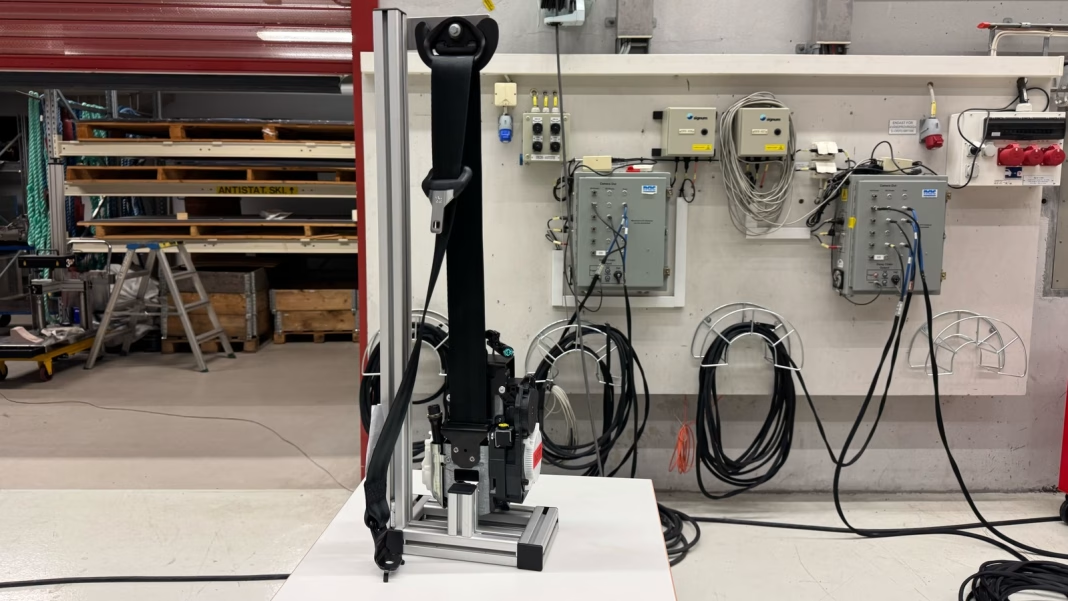Volvo is stepping up its game in vehicle safety with the introduction of the EX60’s innovative multi-adaptive seatbelts. These aren’t your average seatbelts; they’re designed to evolve and improve over time, thanks to cutting-edge technology that leverages over-the-air updates and real-world crash data. Let’s dive into what this means for drivers and passengers alike.
How Do Multi-Adaptive Seatbelts Work?
At the heart of these multi-adaptive seatbelts is a sophisticated system that tailors protection based on various factors, including crash severity, occupant size, and weight. Imagine a seatbelt that can adjust its tension and positioning in real-time, optimizing safety for each individual in the vehicle. This means that whether you’re a petite passenger or a larger driver, the seatbelt can adapt to provide the best possible protection.
This adaptability is crucial because not all accidents are created equal. The severity of a crash can vary widely, and having a seatbelt that can respond accordingly could make a significant difference in outcomes. The EX60’s seatbelts are designed to analyze crash data collected from real-world incidents, allowing them to learn and improve their performance continuously.
What Are Over-the-Air Updates?
You might be wondering how these seatbelts can get better over time. That’s where over-the-air (OTA) updates come into play. Just like your smartphone or computer, the EX60 can receive software updates that enhance its features and performance. This means that Volvo can roll out improvements to the seatbelt system without requiring a trip to the dealership.
OTA updates can include adjustments based on the latest safety research, feedback from drivers, and insights gained from crash data. This proactive approach ensures that your vehicle is always equipped with the latest safety enhancements, making it a smart investment for those who prioritize safety on the road.
Why Is This Important for Drivers?
Safety is a top concern for many drivers, and with advancements like the EX60’s multi-adaptive seatbelts, Volvo is setting a new standard. The ability to customize protection not only enhances safety but also builds confidence for everyone in the vehicle. Parents, for instance, can feel more secure knowing that their children are being protected in a way that’s tailored to their size and weight.
Moreover, the integration of real-time data means that the seatbelt system can adapt to changing conditions, making it a forward-thinking solution in the ever-evolving landscape of automotive safety. It’s about more than just meeting safety standards; it’s about exceeding them and providing a level of protection that’s responsive and intelligent.
Real-World Impact: A Case Study
Consider a scenario where a family is driving in their EX60. The parents are in the front seats, while their two children are safely buckled in the back. During a sudden stop, the seatbelt system detects the abrupt change in speed and adjusts its tension accordingly. If the vehicle were to be involved in a collision, the seatbelts would respond based on the severity of the impact, ensuring that each occupant receives the best possible protection. This kind of tailored response could potentially reduce injuries and save lives.
The Future of Vehicle Safety
As technology continues to advance, the potential for innovations like multi-adaptive seatbelts is vast. Volvo’s commitment to safety is evident in its willingness to embrace new technologies that not only protect occupants but also adapt to their needs. This approach could set a precedent for other manufacturers, pushing the entire industry toward smarter, more responsive safety solutions.
The big takeaway? The EX60’s multi-adaptive seatbelts aren’t just about safety—they’re about smarter adjustments that evolve with time and technology. Start keeping an eye on these innovations, and you might just find that the future of driving is not only safer but also more personalized.


